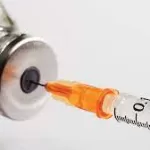Introduction: A Growing Concern
Every year in the United States, approximately 35,000 children under the age of five are rushed to emergency departments due to unintentional medication overdoses. These incidents highlight the severe dangers posed by young children accessing medicines, vitamins, and other supplements, particularly those in gummy or candy-like forms. As naturally curious explorers, young children often put objects, including pills and liquid medicines, into their mouths, leading to potentially life-threatening situations.
1. The Alarming Rise of Melatonin Overdoses
One of the most concerning trends in recent years is the dramatic increase in emergency department visits due to unintentional melatonin ingestions among young children. From 2009 to 2020, there was a staggering 420% rise in such cases. In 2020 alone, U.S. poison control centers received more calls about pediatric overdoses involving melatonin than any other substance.
Melatonin gummies, often used as sleep aids for both adults and children, are particularly problematic. Their colorful appearance and fruity flavors can easily be mistaken for candy by young children, leading to accidental overdoses. A recent study published in the Morbidity and Mortality Weekly Report (MMWR) found that between 2019 and 2022, over 11,000 children aged five years or younger were brought to emergency departments after ingesting melatonin that was left within their reach.
To mitigate these risks, it is essential for caregivers to store melatonin products, especially gummies, securely out of sight and reach of young children, preferably in child-resistant containers. Caregivers should also be educated on the dangers of melatonin overdose in children and encouraged to supervise the use and storage of these products diligently.
2. Medicines and Supplements Often Resemble Candy
The curiosity of young children, combined with the enticing appearance of some medicines and supplements, can create dangerous situations. Many medicines and supplements come in brightly colored pills, capsules, or gummy and liquid formulations that closely resemble candy. This resemblance can lead to unintentional ingestion, resulting in overdose, adverse reactions, or toxicity.
Parents and caregivers should teach children the difference between medicine and candy and emphasize that only a trusted caregiver should give them their medicine. It is also crucial to avoid referring to medicine as candy, even when trying to encourage a child to take it. Clear communication can help prevent confusion and unintentional ingestions.
3. The Importance of Child-Resistant Containers
Child-resistant packaging plays a vital role in preventing young children from accessing medicines and supplements. However, not all products, such as certain vitamins and gummy supplements, require this type of packaging. Products in containers with simple twist-off caps or flip-top lids are easy for young children to open, increasing the risk of accidental ingestion.
A recent study found that three-fourths of emergency room visits for unintentional melatonin ingestions involved a child accessing the product from a bottle, suggesting that the container was either not properly closed or not child-resistant. To reduce these risks, caregivers should be advised to select products that come in child-resistant packaging and store them securely.
4. The Role of Healthcare Professionals
Healthcare professionals have a crucial role in educating parents and caregivers about the importance of safe medication storage. By counseling families on the risks associated with unsecured medicines and supplements, healthcare providers can help prevent accidental ingestions. It is essential to remind caregivers to store all medicines and supplements up and away, out of reach and sight of young children, preferably in child-resistant containers.
Additionally, healthcare professionals should emphasize the importance of keeping the Poison Help number (1-800-222-1222) readily available in case of an emergency. Safe disposal of unneeded medicines is also critical to prevent unintended exposures.
5. Free Educational Resources
To support these efforts, the Up and Away campaign of the CDC-led PROTECT Initiative offers free educational resources for healthcare facilities and pharmacies. These materials, including brochures and posters, provide helpful tips for parents and caregivers on how to store medicines safely.
Healthcare facilities and pharmacies are encouraged to download and display these resources in waiting rooms, exam rooms, and pharmacies. Pharmacists can also distribute handouts to patients or caregivers when they pick up prescriptions, reinforcing the message of safe medication storage.
Conclusion: Ensuring the Safety of Our Youngest
By raising awareness and taking proactive measures, we can significantly reduce the risk of unintentional medication ingestions among young children. Healthcare professionals, parents, and caregivers all play a vital role in safeguarding the health and well-being of our youngest family members. Through education, vigilance, and proper storage practices, we can protect children from the dangers of accidental medication overdoses.












